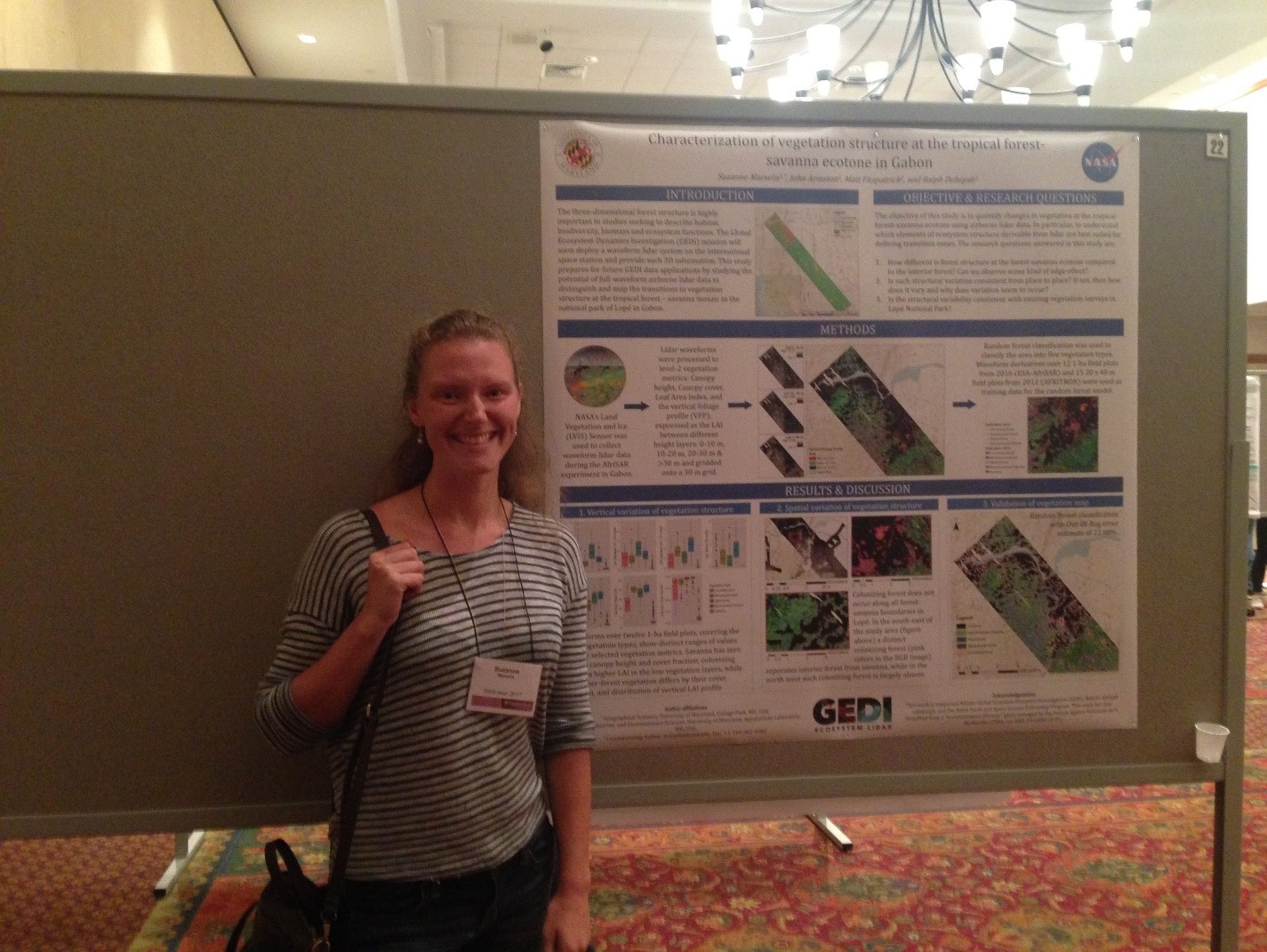Several members of the Global Ecosystem Dynamics Investigation (GEDI) science definition team, led by Ralph Dubayah, attended the Silvilaser Conference in October 2017 in Blacksburg Virginia. The team provided a number of presentations related to GEDI to inform and update the attendees on the science strategies and to strengthen, renew and initiate scientific collaborations with scientists from all over the world. Especially the Wednesday morning sessions were dominated with presentations on the progress of GEDI-related science. Dr. Steven Hancock presented his work on the GEDI simulator; a simulator that can be used to generate GEDI-like lidar data and sampling pattern from different types of airborne and terrestrial lidar data. These GEDI-like simulations were used by Dr. Laura Duncanson to test different algorithms in order to estimate biomass from the lidar signals, answering to one of the objective of the GEDI mission: creating a global biomass product. Dr. John Armston informed the crowd about the different types of airborne and field information that have been crowd-sourced and processed for these GEDI-biomass calibration and validation efforts and elaborated on biomass products resulting from the AfriSAR campaign. The AfriSAR campaign was held in Gabon in 2016 as a collaboration between space agencies from different countries (NASA, ESA, DLR, ONERA, AGEOS) in preparation for multiple upcoming space missions among which GEDI. NASA flew the Land Vegetation and Ice Sensor (LVIS), the airborne predecessor of GEDI, in order to provide important calibration and validation data over dense tropical forests. Dr. Hao Tang presented the results of algorithms calculating indices describing the diversity of the foliage profile along the vertical vegetation profile applied to the LVIS data, in preparation for application on GEDI data. Suzanne Marselis (PhD candidate) presented her preliminary results towards an application of GEDI beyond the original mission statement; using airborne lidar data from the AfriSAR campaign to study transitions in vegetation structure between different ecosystems: the ecotone between savanna and tropical forest (see photo). Danielle Rappaport (PhD candidate) also attended the conference and provided a highly interesting presentation on the application of airborne lidar data in combination with acoustics data from the amazon in order to relate different types of degraded forest to their respective biodiversity. This novel combination of datasets provoked lots of conversation, ideas and collaborations for her PhD work and potential for application of GEDI data on similar research questions in the future.


